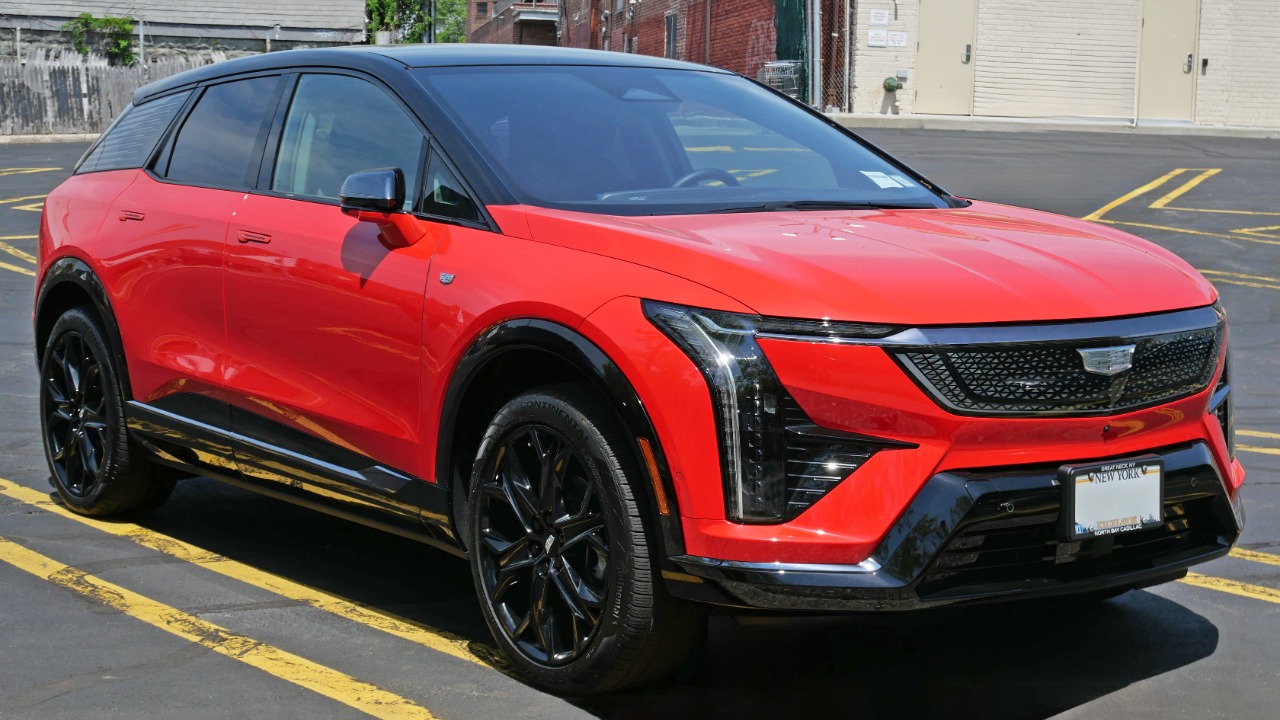
Cadillac is bringing its all-electric Optiq SUV to Europe, featuring a smaller battery pack and reduced DC fast-charging speeds tailored for the region’s standards and infrastructure. This adaptation marks a departure from the U.S. model’s specifications, aiming to balance performance with European market demands. The Optiq’s European debut highlights Cadillac’s strategy to expand its EV lineup across continents with region-specific tweaks.
European Market Entry
The Cadillac Optiq is set to make its European debut, with the initial rollout planned for key markets such as Germany, France, and the United Kingdom. This phased introduction will allow Cadillac to strategically position the Optiq as a premium mid-size electric SUV, directly competing with established models from Audi, BMW, and Mercedes-Benz in the luxury segment. By entering these competitive markets, Cadillac aims to capture a share of the growing demand for electric vehicles in Europe, where consumers are increasingly prioritizing sustainability and innovation.
Cadillac’s approach to the European market involves more than just product placement; it includes ensuring compliance with stringent EU emissions and safety standards. These regulatory requirements have influenced the Optiq’s design and engineering, ensuring that it meets the expectations of European consumers while adhering to local laws. This compliance not only facilitates a smoother market entry but also enhances the brand’s reputation as a responsible and forward-thinking automaker.
Battery Capacity Adjustments
The European version of the Cadillac Optiq features a smaller battery compared to its U.S. counterpart. While the American model boasts a 102 kWh pack, the European Optiq is equipped with a reduced capacity to optimize weight, cost, and efficiency for the region’s roads. This adjustment reflects Cadillac’s commitment to tailoring its vehicles to meet the specific needs and preferences of different markets, ensuring that the Optiq remains competitive and appealing to European drivers.
The impact of the smaller battery on the Optiq’s range is significant, with estimates based on the WLTP testing cycles suggesting a reduced driving distance compared to the U.S. model. However, this trade-off is balanced by the benefits of a lighter vehicle, which can enhance handling and efficiency. Additionally, the use of European-sourced components in the battery’s construction may further align the Optiq with regional sustainability goals and supply chain preferences.
Charging Performance Differences
One of the notable differences in the European Optiq is its slower DC fast-charging capability. Capped at a lower rate than the U.S. model’s 190 kW, this adjustment is designed to match the prevalent European charging infrastructure, which often supports lower power levels. This change ensures that the Optiq can be charged efficiently across the continent, even if it means longer stops at highway stations compared to North American benchmarks.
In terms of AC charging, the Optiq is compatible with common European home and public chargers, including the necessary adapters for CCS standards. This compatibility is crucial for ensuring that owners can easily integrate the vehicle into their daily routines without facing significant charging challenges. While the slower charging speeds may require some adjustment for drivers accustomed to faster options, the widespread availability of compatible infrastructure helps mitigate potential inconveniences.
Pricing and Competitive Positioning
The starting price for the European Optiq positions it competitively against rivals like the BMW iX3 and Audi Q4 e-tron. By offering a premium electric SUV at a price point that reflects its luxury features and performance capabilities, Cadillac aims to attract discerning buyers who value both style and substance. The Optiq’s pricing strategy is further supported by the availability of various trim levels and optional features, such as all-wheel drive configurations and interior luxury upgrades, allowing customers to tailor the vehicle to their preferences.
European buyers may also benefit from incentives such as EU EV subsidies, which can significantly influence the final cost of the Optiq and encourage adoption. These financial incentives, combined with the vehicle’s competitive pricing and features, position the Optiq as an attractive option for consumers looking to transition to electric mobility without compromising on quality or performance. By aligning its offerings with market demands and regulatory frameworks, Cadillac is poised to make a strong impact in the European electric vehicle landscape.
For more detailed information on the Cadillac Optiq’s specifications and pricing, visit InsideEVs.